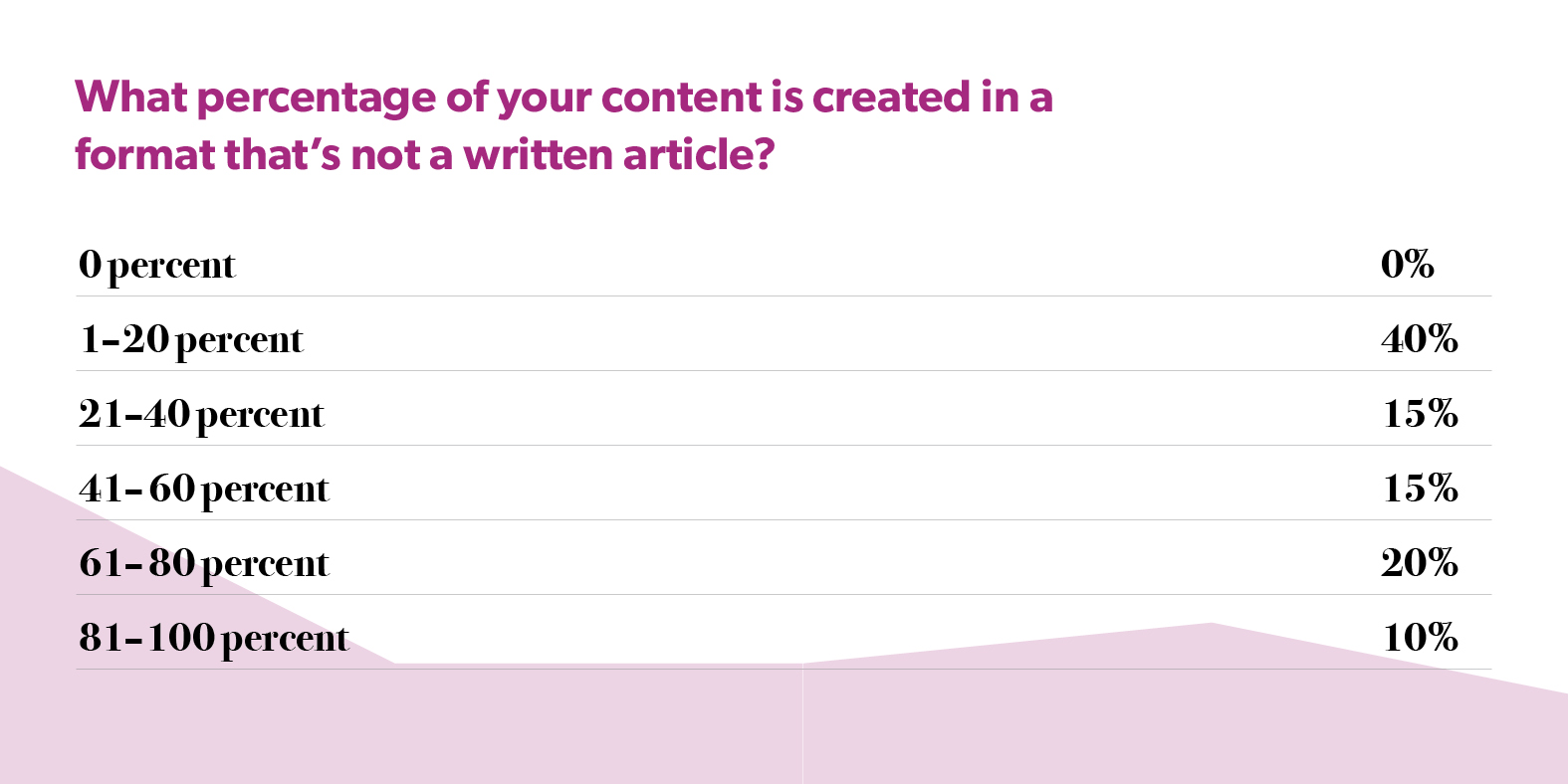Digiday Research: Social media dominates distribution for content marketing

This research is based on unique data collected from our proprietary audience of publisher, agency, brand and tech insiders. It’s available to Digiday+ members. More from the series →
In August, we gathered a group of retail and brand executives in Vail, Colorado, for the Digiday Content Marketing Summit. The main topic of discussion: Where does content marketing go from here?
During the summit, we asked speakers and attendees from brands like Reebok, Heineken and Urban Zen about the types of content they’re creating, whether they’re outsourcing work or keeping it in-house and whether or not they can realistically expect content to drive conversions.
Thinking outside the sponsored post
“Content marketing isn’t a nice-to-have; it’s a must-have,” said one attendee. But what format works best? While articles don’t take a lot of time or money to write, marketers fear readers have developed blinders when they encounter the word “sponsored” on their favorite sites.
“When you’re selling a product and you’re not editorial, but you’re trying to create content people actually want to read, we fear that people are going to immediately bounce the second they realize they’re reading sponsored content or brand content,” said one marketer at the event.
To capture attention, content marketers are investing in new formats. Nearly half of the attendees said 40 percent or more of the content they create is something other than a sponsored post.

When asked to select the types of content they’re producing, almost every attendee said they’re investing in social media and video. Sixty-nine percent said they’re still writing sponsored posts.

Questioning Facebook’s motives
Social media is the most important marketing channel for a majority of attendees. But that doesn’t mean figuring out how to please Facebook’s ever-changing algorithm has gotten any easier.
“Just because we put up a great Facebook video, it’s not that someone says, ‘Oh, I’ll go buy.’ There’s a lot more involved in that,” said one marketer, who added that the money spent on creating video and then promoting it on Facebook is a big budget suck.
It’s not just Facebook: Platforms across the board are black boxes of data. One attendee said LinkedIn, Twitter and Facebook all have discrepancies in the data they share with brands, inconsistent with the metrics that brands get internally or through third-party partners.
Regardless of confusion around metrics and a general lack of trust for the platforms’ ultimate motives, social media is by far the first place brands go when they want to promote their content.

Who’s the boss?
Brands face a constant question: to go in-house, or not to go in-house?
Discussion at the conference shed light on two sides of the question. When brands work with agencies on developing content and creating campaigns, they get a valuable outsider perspective that can save brands from living in an echo chamber. (“Just look at what happened to Pepsi,” one attendee said.) On the other hand, many marketers asked, “Who knows our brand and can tell its story better than the people living and breathing it every day?”
The majority of attendees prefer to produce content internally. According to our survey, 70 percent of brands produce 60 percent or more of their content in-house.

And when it comes to partnering with a single publisher, the majority of brands surveyed do not keep a publisher on retainer to share its content.

What sells?
Over the course of the summit, the same challenge kept coming up: How do we track conversion? And when marketers don’t want to bash audiences over the head with promotional messages, should conversion be the only metric of success?
It’s a Catch-22. If content marketers can’t prove to executives that what they do makes money, they will have to subsist on tiny budgets. But without proper resources, expectations for what content can be executed have to be managed.
“What we do costs money. Where is that money supposed to come from? A sale makes it easier to justify, but you can’t always be selling. That’s a huge turnoff,” said one marketer.
It turns out, attendees don’t always expect their work to lead to direct sales. More than half said they only expect content to lead to conversions some of the time.
“The best thing I got from this event was the message that conversion isn’t the only indicator of success for content marketing,” said one attendee. “I’m going back to the office with that message.”

More in Marketing

Ad revenue or subscriptions: What’s more viable to Snap’s success as a business?
While subscriptions are still a modest slice of Snap’s revenue pie, they’re giving the company’s top line a noticeable lift.

The pragmatist’s guide to esports in 2024
Last year, Digiday published a “cynic’s guide” to esports in 2023. This year, the industry’s outlook is decidedly more optimistic. However, many esports companies remain unprofitable, and industry leaders are still trying to find a path forward that is sustainable in the long term.

Here’s everything retail media network experts are asking for this holiday season
If retail media network experts could write a letter to the North Pole, here’s what they’d ask for.





